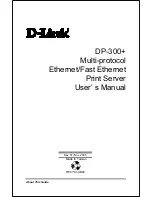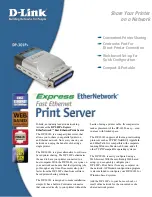
SX™
Service and Maintenance Manual A-4
960714-02B © 2007 I2407
APPENDIX
PROTECTING YOUR PRINTHEAD
from abrasive wear. However, abrasive damage can arise when a label or tag stock is wider than the
ribbon so that the media on either side of the ribbon's edges passes directly over the printhead. Using a
ribbon with a less effective backcoat, using inappropriate media for thermal transfer and improper
cleaning of the printhead are additional causes of printhead failure. Ironically, unlike Sony ribbons, some
ribbons with backcoats specially formulated to clean the printhead may also cause abrasive damage.
Q:
How can I recognize abrasive damage?
A:
The first sign of abrasive damage to a printhead is likely to be a decrease in image quality. In the
extreme, abrasive wear can result in failure of one or more heater elements in the print head. This leads
to a "white line" through the printed image where the printhead no longer has the ability to transfer ink.
Q:
What protects the printhead from abrasion?
A:
Print heads have a thin, hard coating over the heating elements that protect them from abrasion while
providing efficient heat transfer. The ribbon also protects the printhead from abrasive damage. First, the
ribbon separates the printhead from the printing substrate to shield it from abrasive movements. This is
why the ribbon must be at least as wide as the printing substrate. The ribbon also has a lubricated
backcoat that allows it to flow smoothly over the printhead with minimal abrasiveness. (Note: Many
thermal transfer printers can be run in either the Thermal Transfer or the Direct Thermal mode. In the
Direct Thermal mode, heat energy is delivered directly to thermal paper and no ribbon is used. Print
heads wear out faster in this mode, not only because of the additional temperature requirements, but also
because there is no ribbon in place to prevent abrasive wear caused by the substrate).
Q:
What is the printhead energy setting used for?
A:
The printhead energy setting has a direct bearing on the darkness of the image. Generally speaking,
the higher the energy, the more ink that is transferred from a given ribbon. It is important to run the printer
at its optimum energy setting. The optimum setting is the lowest energy required to deliver acceptable
print quality with the media used and the selected print speed.
Q:
Why do operators frequently feel the need to turn the energy settings up?
A:
There are a number of factors that can make it difficult to print good quality labels without turning the
energy setting up. These include the use of low sensitivity substrates that require a blast of thermal
energy to ensure ink adhesion, build-up of particulates and ink residue on the heater elements that
present a barrier to efficient energy transfer, high printing speeds, and insufficient or improper
maintenance of the printer. Operators try to overcome these factors by increasing the printhead energy
setting.
Q:
Are there other factors that impact the printer's energy output?
A:
Yes. Coverage of ink on the label also affects the overall energy output of the printhead. A typical label
has about 30% coverage. When a label with 70% coverage is run, more than twice as many heating
elements in the printhead are activated during every printing cycle. Unfortunately, running a thermal
transfer printer at the resulting higher temperatures may shorten the print head’s life. In addition, if the
printer is accidentally set for the Direct Thermal mode for a thermal transfer application, an unnecessary
amount of heat will be generated by the printhead, ultimately contributing to premature printhead failure.
Q:
Will a quality ribbon help me run at a lower energy setting?
A:
Yes. Choosing a ribbon and substrate combination that is matched for optimum print quality at the
lowest energy settings can extend printhead life. In addition, quality ribbons are coated with a high-



































